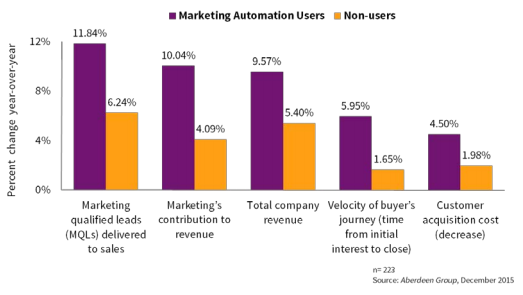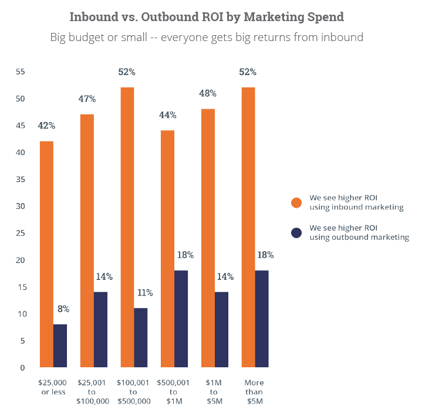Is Inbound Marketing Right for Nonprofits?

Throughout our 28+ year history, we have had some great nonprofit clients. The nature of these organizations is all over the place, including the following:
- Christian ministries
- Churches
- Curriculum publishers
- Book publishers
- Relief organizations
- Political action committees
- Political parties
- Senior housing
- Mental health services
While all of these organizations have been a delight to work with, in recent years, those that have proven to be the most successful from a marketing perspective are the ones that have recognized the challenges that are surfacing as we shift from the age of information to the age of experience. Inbound marketing, marketing automation, content marketing, and growth-driven design techniques are a perfect way to address those challenges.
A properly planned and executed inbound-marketing strategy maximizes the return on every dollar spent on marketing and fundraising, while potentially improving the impact of the core services that support the organization's mission—making it ideal for most nonprofit organizations.
Fund-Raising
Most nonprofit organizations (at least periodically) struggle with the need to find or keep funding sources. Grant writing, donor searches, frequent “asks” from existing donors, and other such fundraising efforts are a constantly demanding chore. And while the organization must find these sources of funds, those efforts are usually considered secondary to the primary purpose or mission of the organization. As a result, fundraising activities are often not given the appropriate level of priority needed to ensure financial stability.
With almost 1.6 million nonprofit organizations in the U.S. and the phenomenal pace of growth (between 2001 and 2011, nonprofits grew 25% compared to 0.5% for for-profit organizations), nonprofits need all the help they can get in differentiating their organization and proving their effectiveness.

Inbound marketing—driven by content marketing and supported by a solid marketing automation platform—can prove to be a shot-in-the-arm for these organizations. Companies using marketing automation have improved targeting, substantially higher conversion rates than non-users, and much higher revenue growth rates (i.e. 20% growth in revenue for marketing automation users vs. a 6.8% industry average and 4.5% decline in revenue for laggard companies).
The insights provided by built-in analytics tools make it possible to quickly determine what's working and what's not, thus increasing velocity through the buyer's (or donor's) journey and reducing acquisition cost. The ability to see who is visiting your website is an extremely powerful tool that can lead to timely efforts to build or further relationships. With the addition of personalized email marketing, blogs, and e-newsletters, marketing automation software provides an effective way of staying in touch with your donors and prospective donors, differentiating your organization, building donor loyalty, improving donor retention, and recapturing previous donors. (With first-year retention rates for nonprofits averaging 27.3% and multi-year donor retention rates at only 58.4%, nonprofits typically have a solid base of prospects they should be trying to recapture.)
Core Constituent Support
But what about inbound marketing’s ability to support the primary mission and constituency of the organization? If thoughtfully created, much of the content produced to attract new "customers" can prove effective at simultaneously supporting the organization's existing constituents. Email marketing, blogs, and e-newsletters can also pay huge dividends with your primary audience. Clearly, nonprofits need to fully understand their audience (personas), and their website needs to be more than an online brochure in order to serve the needs of their customers or constituents. But the ability of an inbound marketing strategy to attract and retain a target  audience is profoundly greater than traditional outbound marketing, and more efficient and less expensive than many other non-information-based approaches to serving their customer base (and HubSpot's research showed no difference between for-profit and nonprofit with regard to ROI).
audience is profoundly greater than traditional outbound marketing, and more efficient and less expensive than many other non-information-based approaches to serving their customer base (and HubSpot's research showed no difference between for-profit and nonprofit with regard to ROI).
But just like the fundraising front, inbound marketing takes a commitment to apply resources to ongoing inbound efforts. While this may well require a change in mindset, once implemented, this modern approach will prove why for-profit organizations have utilized it so effectively.
Ready to Explore It?
If you are a nonprofit organization that is looking for a way to maximize your fundraising efforts and most efficiently utilize the funds you have to serve your constituents better, please reach out to us. We’d love to explore how inbound marketing might be just the answer you’re looking for.


